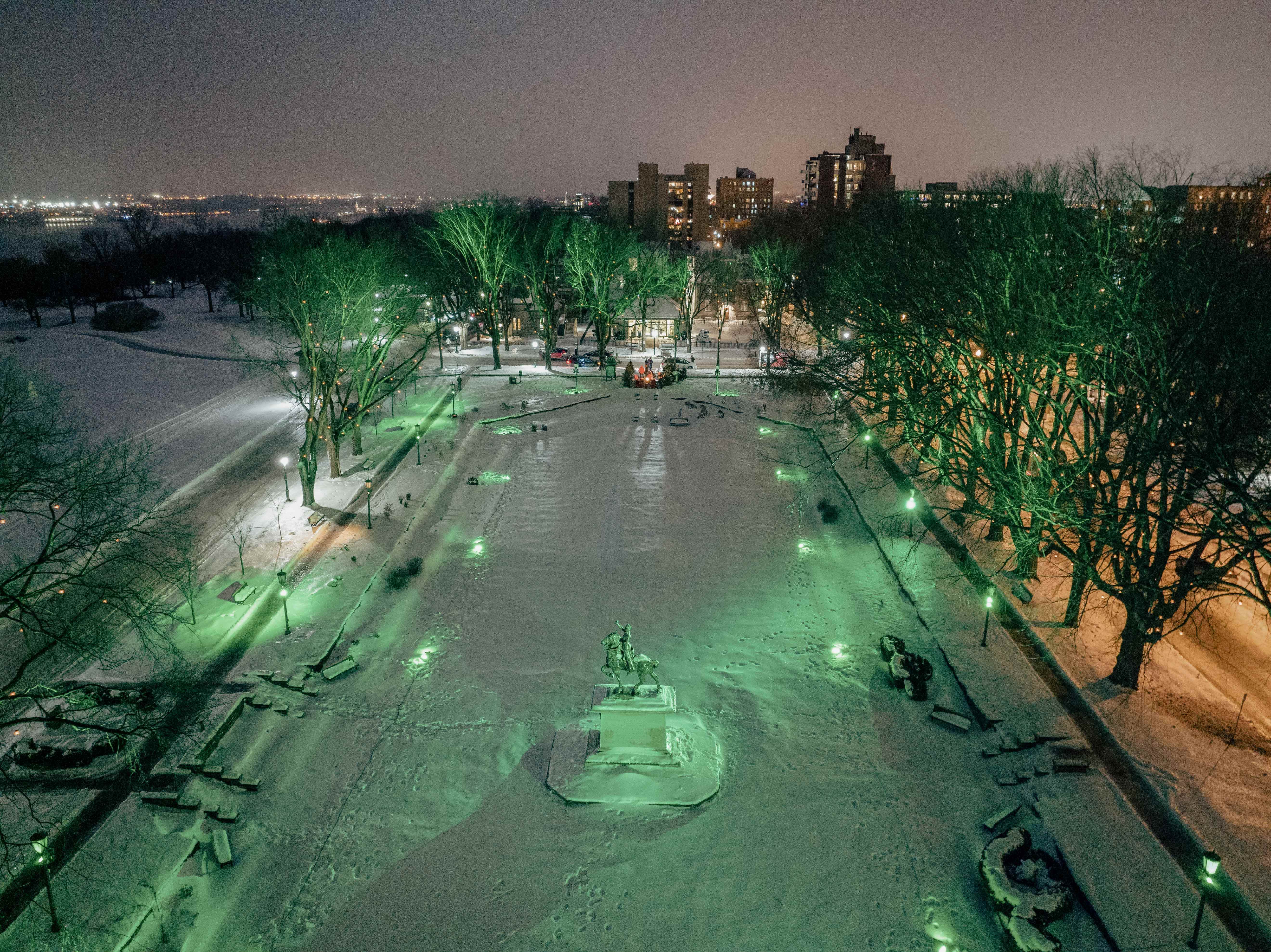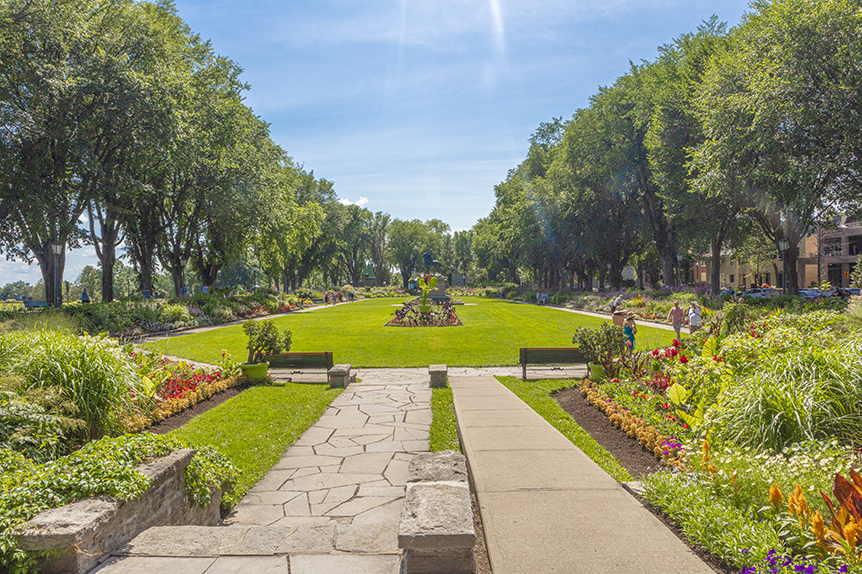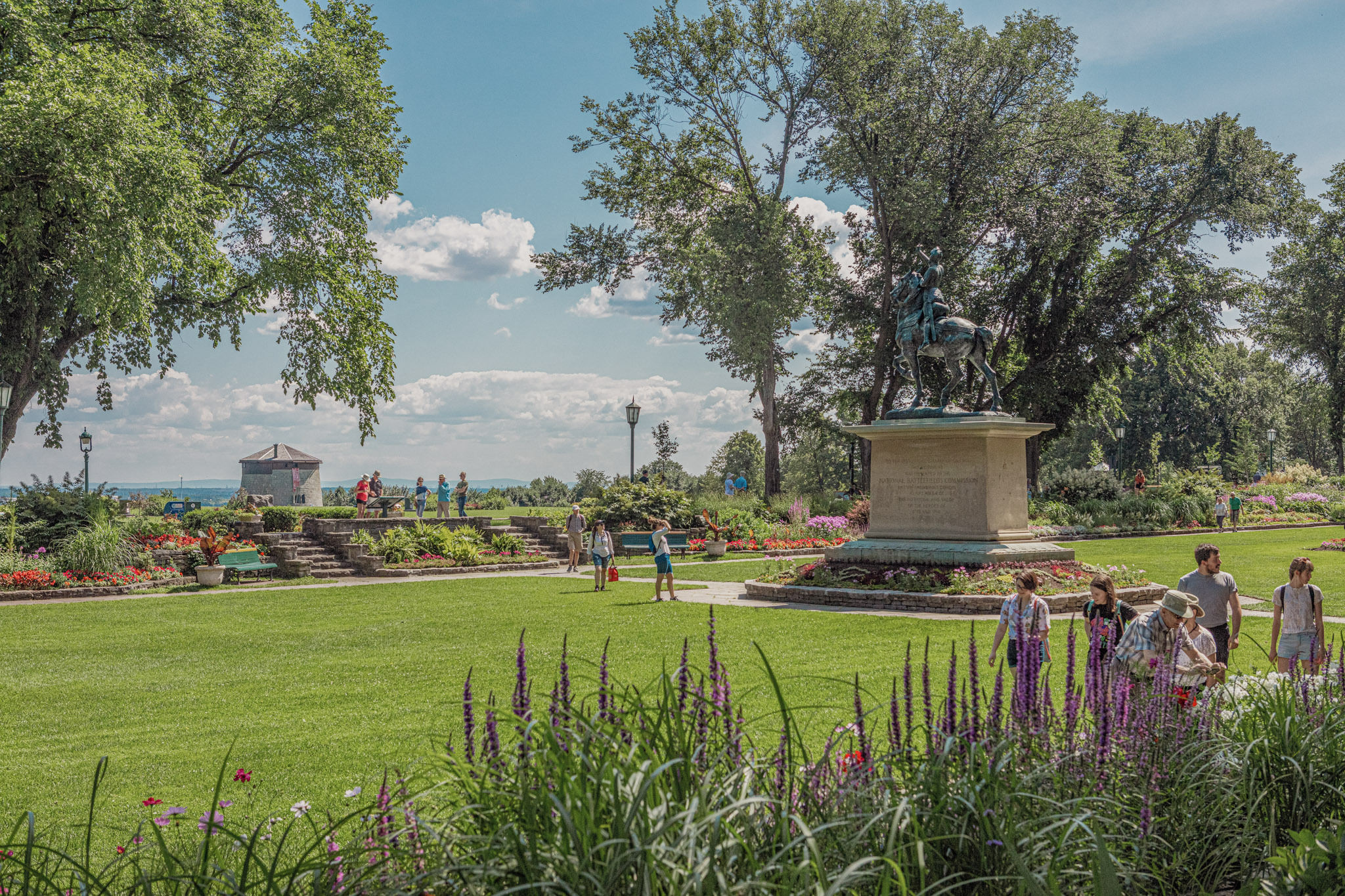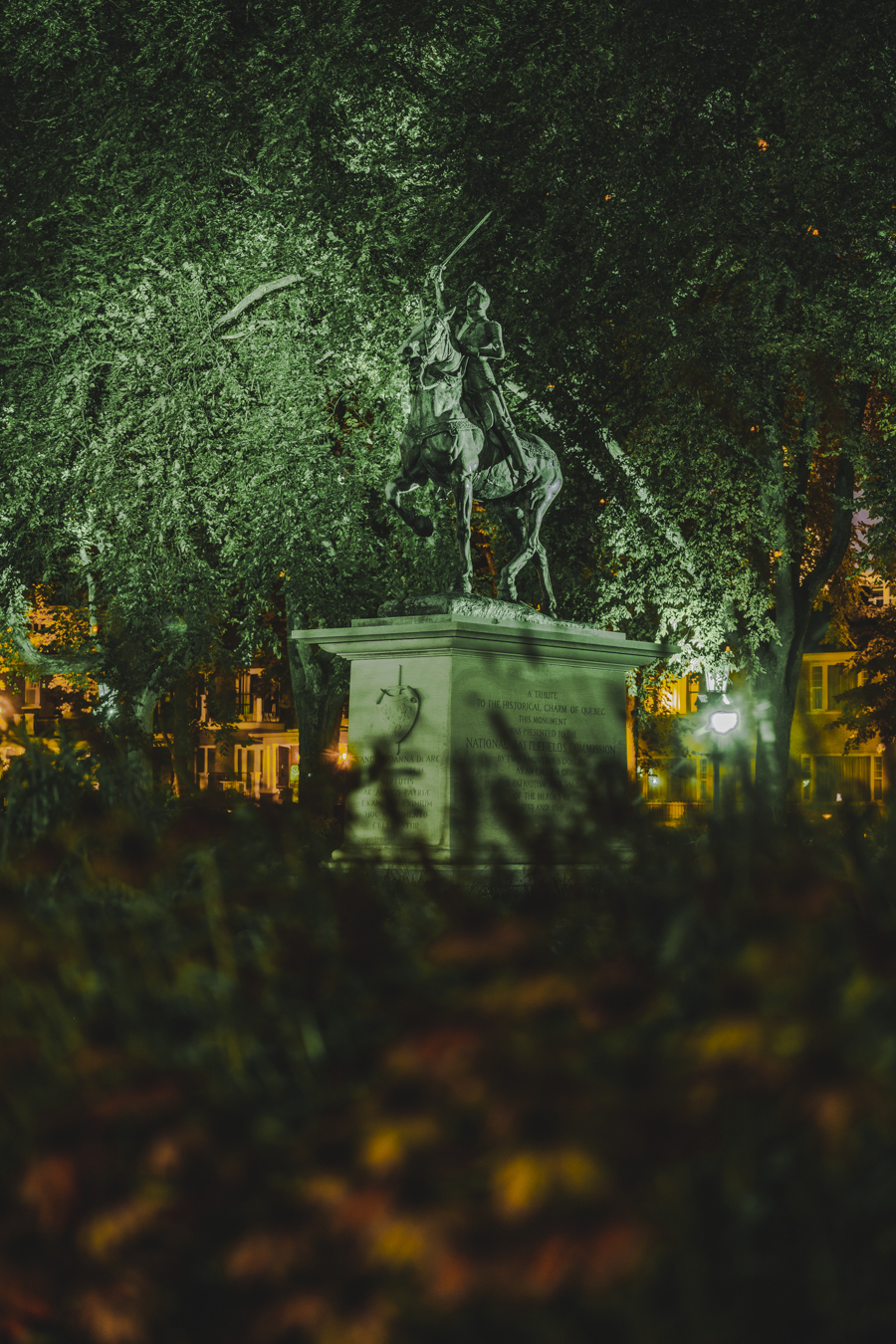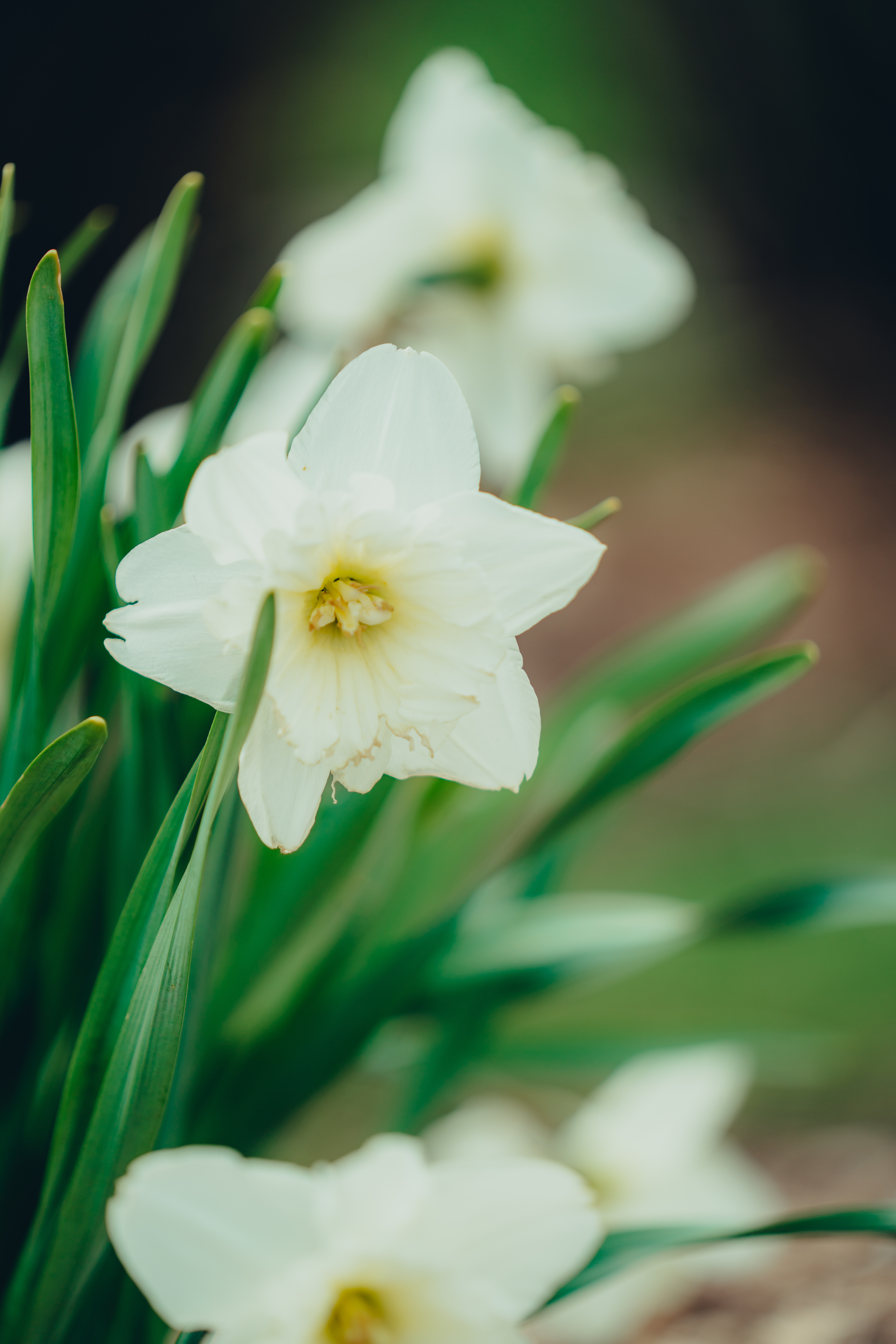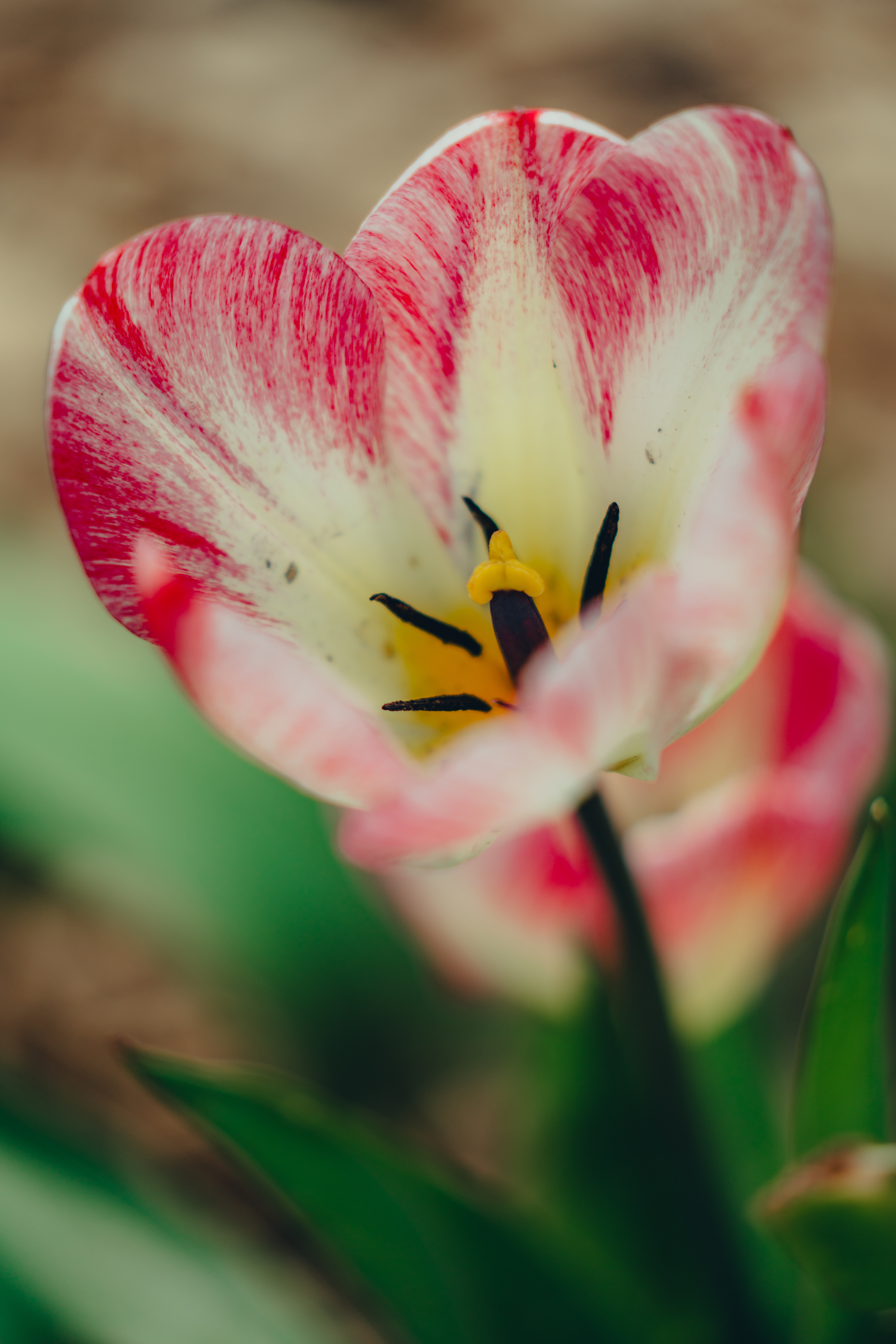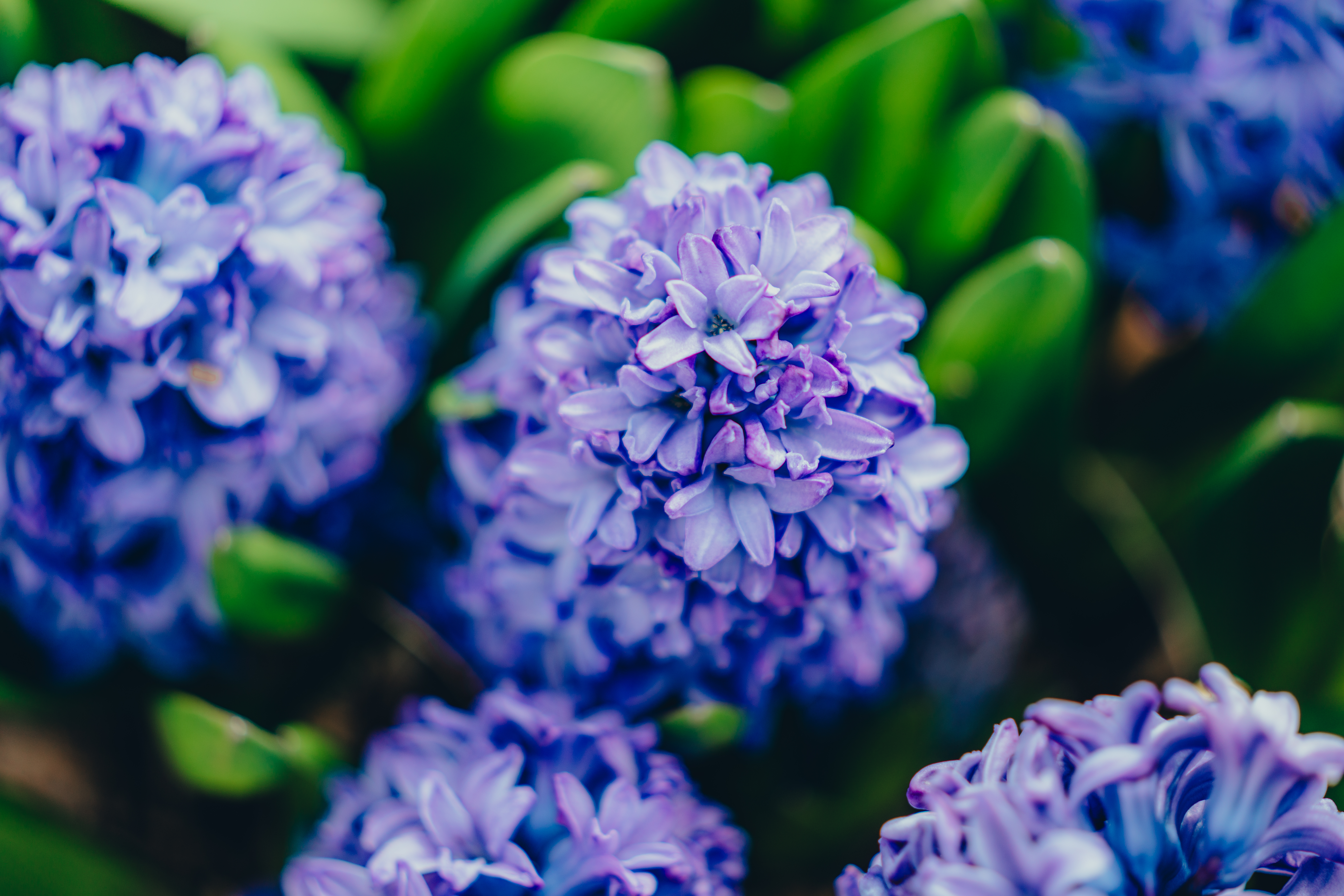A floral gem
The Joan of Arc Garden was not in the original plans of Frederick G. Todd, the landscape architect responsible for the park's layout in 1909. Instead, it owes its existence to a gift from an American couple.
Enchanted by the city of Québec, Mr. Archer Milton Huntington and his wife Anna Hyatt Huntington, donated an equestrian statue of Joan of Arc, sculpted by Mrs. Hyatt Huntington herself, to the National Battlefields Commission.
After many discussions about where to place the statue and the justification for the presence of the French heroine in the Battlefields Park, it was decided to create a garden in the middle of which the statue would stand.
Joan of Arc Garden
DirectionsLighting at the Garden
At nightfall, the Joan of Arc Garden comes alive with soft, enchanting lighting and a great artistic aura in keeping with the site, the elms surrounding the flowerbeds and the famed Joan of Arc monument.
The lighting varies with atmospheric conditions, thanks to a system connected to the Quebec weather station - a salute to the weather station that operated on the Plains from 1930 to 1954!
As the year unfolds, custom lighting highlights milestones on the calendar.
Design
The design of the garden plan was entrusted in 1938 to Louis Perron, the first Quebecer to have graduated from a university-level landscape architecture school. His mandate was to design a plan that would take into account Todd's overall layout. In his initial plans, Perron planned for four majestic entrances leading into the garden as well as two bodies of water that would serve as mirrors in which the Joan of Arc statue would be reflected. However, financial constraints imposed by the imminent war (World War II) forced the landscape architect to revise his drawings. The bodies of water were replaced with rose gardens and the entrances were more modest.
A horticultural tradition
For nearly 100 years, the National Battlefields Commission has been cultivating all the flowers needed to beautify the park. Its greenhouses, among the oldest still active in Quebec, produce close to 80,000 annual, biennial, and perennial plants.
Practised since the early 19th century, mosaiculture involves creating a design or raised lettering using specific plants (Santolinas, Alternentheras). Creativity, imagination and dexterity are key to mosaiculture. This unique technique is an important aspect of the ornamental horticulture of the park, and a source of pride for its team.
On the Plains, this art form has been practiced since the 1910s. Today, mosaics can be found at the base of the main monuments. The horticultural team has also been working for several years to develop original techniques and presentations by, for example, varying the types of plants used.
Other floral attractions
Apart from the Joan of Arc Garden, there are other displays worth visiting:
Flower beds along Ontario Avenue, south side of the Musée national des beaux-arts du Québec
Borders of the Centennial Fountain next to the Edwin-Bélanger Bandstand
XII World Forestry Congress Commemorative Garden, which presents 28 emblematic tree species of Canada and the world
Louis-Hebert Orchard, a tribute to the first French settler to successfully cultivate the land
Mosaics around the various monuments such as the Cross of Sacrific
Entrance to the Des Braves Park
Nature Trail: 1.8km through the wildest part of the park, in the footsteps of the early herbalists
